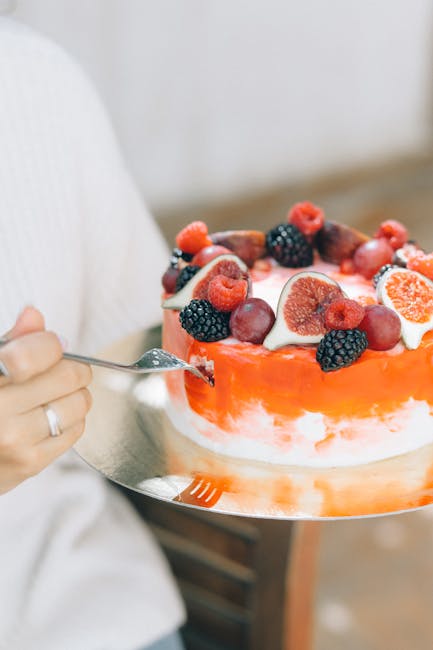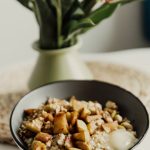Dairy-free ice cream, a delicious and inclusive alternative to traditional ice cream, boasts a surprisingly rich history, though its widespread popularity is a relatively recent phenomenon. While the concept of frozen desserts predates the widespread availability of dairy, the specific development of dairy-free ice cream as a commercially viable product is linked to the growing awareness of dietary restrictions and allergies in the late 20th and early 21st centuries. Early iterations likely involved using readily available plant-based ingredients like fruit purees and nuts, creating frozen treats enjoyed across various cultures for centuries. However, these weren’t necessarily marketed or produced as a direct dairy-free alternative, as the concept of specific dietary needs wasn’t as prevalent.
The rise of veganism and the increase in diagnosed lactose intolerance significantly fueled the demand for dairy-free ice cream. Lactose intolerance affects an estimated 65% of the world’s adult population, a staggering number highlighting a clear market need. This, coupled with the growing popularity of vegan lifestyles – projected to reach 75 million consumers in the United States by 2025 – has driven innovation in the dairy-free ice cream market. Companies began experimenting with various plant-based milks, including soy, almond, coconut, oat, and cashew, to create creamy and flavorful alternatives that mimic the texture and taste of traditional dairy ice cream.
The cultural significance of dairy-free ice cream is multifaceted. It represents a move towards greater inclusivity in food choices, ensuring that individuals with dietary restrictions can enjoy a beloved treat without compromise. It challenges traditional notions of what constitutes a classic dessert, broadening culinary horizons and celebrating the diversity of ingredients and flavors available from the plant kingdom. Furthermore, the increasing sophistication of dairy-free ice cream production allows for the incorporation of unique and locally sourced ingredients, fostering a connection to regional culinary traditions and supporting sustainable agriculture. This aligns with growing consumer interest in ethically sourced and environmentally conscious food choices.
The market for dairy-free ice cream is booming. It’s no longer a niche product but a significant segment of the overall ice cream industry, with new brands and innovative flavors constantly emerging. This competition leads to higher quality products and more affordable prices, making dairy-free ice cream accessible to an even wider range of consumers. From artisanal small-batch producers to large-scale manufacturers, the industry showcases the creativity and adaptability of food production in response to evolving dietary preferences and societal values.
Ingredients and Measurements
Creating delicious dairy-free ice cream requires careful attention to ingredient selection and precise measurements. The success of your recipe hinges on achieving the right balance of sweetness, texture, and creaminess. Below, we’ve detailed the ingredients and their corresponding quantities for a classic dairy-free vanilla ice cream recipe. You can easily adapt this base recipe to create various flavors by adding extracts, cocoa powder, or fruit purees.
Full-Fat Coconut Milk (1 can, 13.5 oz): This is the foundation of our creamy texture. Using full-fat coconut milk is crucial; light coconut milk will result in a significantly icier final product. Make sure to use a can that’s been refrigerated overnight. This allows the cream to separate from the water, resulting in a richer, thicker ice cream. Before measuring, scoop out the thick, creamy top layer, leaving behind the watery liquid at the bottom. You should aim for approximately 1 ¾ cups of thick coconut cream.
Sugar (¾ cup, granulated): The amount of sugar can be adjusted to your preference. For a less sweet ice cream, reduce the sugar to ½ cup. Remember that different sweeteners have varying levels of sweetness, so adjust accordingly if substituting with alternatives like maple syrup or agave nectar. Granulated sugar dissolves easily and contributes to a smooth texture.
Vanilla Extract (2 teaspoons): High-quality vanilla extract is essential for a rich, authentic flavor. Avoid using imitation vanilla, as it will significantly impact the overall taste profile. If you have vanilla bean paste on hand, you can substitute 1 teaspoon of paste for 1 teaspoon of extract for an even more intense vanilla flavor.
Salt (¼ teaspoon): A pinch of salt enhances the sweetness and balances the flavors. Don’t skip the salt! It’s a crucial element that contributes to the overall taste complexity.
Optional additions: Feel free to experiment with adding other ingredients to customize your ice cream. Consider adding:
- Cocoa powder (¼ – ½ cup): For chocolate ice cream.
- Fruit purees (1 cup): Strawberry, mango, or blueberry purees work wonderfully.
- Nut butters (2-4 tablespoons): Peanut butter, almond butter, or cashew butter add richness and flavor.
- Espresso powder (1-2 tablespoons): For a coffee ice cream.
Important Note on Measurements: Accuracy is paramount in ice cream making. Use a kitchen scale for the most precise measurements, especially for the coconut cream and sugar. Volume measurements can vary depending on how ingredients are packed, leading to inconsistencies in the final product. Using a scale ensures consistency and better results.
Ingredient Quality: The quality of your ingredients directly impacts the final product. Choose high-quality ingredients whenever possible. This will result in a more flavorful and enjoyable ice cream experience.
Equipment List
Making dairy-free ice cream requires specific equipment to achieve the best texture and consistency. While some items might be optional depending on your recipe and preference, others are essential for a smooth and creamy final product.
High-Powered Blender or Food Processor: This is arguably the most crucial piece of equipment. A high-powered blender, such as a Vitamix or Blendtec, is ideal for creating a completely smooth base without any ice crystals. A food processor can also work, but a blender generally provides better results for achieving that ultra-smooth texture. Ensure your blender has a capacity of at least 64 ounces (1.9 liters) to accommodate the volume of ingredients for most recipes. A smaller blender might require multiple blending cycles, potentially affecting the final texture.
Ice Cream Maker: While technically not strictly necessary for all dairy-free ice cream recipes (some recipes can be frozen without a machine), an ice cream maker is highly recommended. It provides significantly better results by churning the mixture while it freezes, preventing large ice crystals from forming, and resulting in a creamier, smoother texture. Choose an ice cream maker with a capacity appropriate for your batch size. Most home ice cream makers have capacities ranging from 1 to 2 quarts (1 to 2 liters). Consider the size of your recipes when making your selection.
Measuring Cups and Spoons: Accurate measurements are crucial in baking and ice cream making. Invest in a good set of measuring cups and spoons to ensure consistent results. These should include both liquid and dry measuring cups, as well as a variety of spoon sizes. Using accurate measuring tools is vital for achieving the desired texture and consistency in your dairy-free ice cream.
Mixing Bowls: You will need several mixing bowls of varying sizes. A large bowl (at least 4-quart capacity) is essential for combining the ingredients before blending, while smaller bowls can be used for measuring and holding specific ingredients. Choose bowls made of stainless steel or glass for their durability and ease of cleaning.
Rubber Spatula or Scraper: A rubber spatula is essential for scraping down the sides of the blender or food processor during blending, ensuring all ingredients are incorporated evenly. It also comes in handy for transferring the ice cream mixture to the ice cream maker and scraping down the sides of the ice cream maker during the churning process. Choose a sturdy spatula made of silicone or high-quality rubber.
Airtight Containers: Once your dairy-free ice cream is made, you’ll need appropriate storage containers. Airtight containers are crucial for maintaining the quality and preventing freezer burn. Opt for containers made of freezer-safe plastic or glass. Consider smaller containers for easier portioning and scooping.
Optional Equipment: While not essential, a kitchen scale can provide more precise measurements. A thermometer can help you monitor the temperature of your ingredients, which is beneficial for some recipes. A candy thermometer is particularly useful when working with recipes that require specific temperatures.
Instructions
Making dairy-free ice cream requires careful attention to detail, but the reward is a delicious and creamy frozen treat! These instructions are designed to guide you through the process, ensuring a smooth and successful outcome. Please read through the entire recipe before beginning.
Preparation is Key: Before you start, ensure all your ingredients are at room temperature, except for the chilled coconut cream (or your chosen dairy-free cream alternative). This will help them blend smoothly and prevent lumps. If using frozen fruit, allow it to thaw slightly, but don’t let it become completely liquid. For optimal texture, it’s best to use ripe, flavorful fruits.
Blending the Base: Begin by combining 2 cups of your chosen dairy-free milk (almond, soy, oat, or coconut milk all work well), 1/2 cup of granulated sugar (adjust to your sweetness preference), 1 teaspoon of vanilla extract, and a pinch of salt in a high-powered blender. Blend until the sugar is completely dissolved and the mixture is smooth. Note: If using coconut milk, make sure you’re using the full-fat variety for the creamiest results. If using a less powerful blender, you may need to blend in stages, stopping to scrape down the sides of the blender as needed.
Incorporating the Cream and Other Ingredients: Next, gently add 1 (13.5 ounce) can of chilled full-fat coconut cream (or your dairy-free cream alternative) to the blender. Blend on low speed initially to avoid splattering, then gradually increase the speed until everything is thoroughly combined. If adding other ingredients like cocoa powder, nut butters, or fruit purees, add them now and blend until completely incorporated. Important: Over-blending can result in a grainy texture, so blend only until smooth. If using whole fruits or chunks, add them after the initial blending and pulse gently to incorporate them without over-processing.
Churning the Mixture: Pour the blended mixture into your ice cream maker. Follow the manufacturer’s instructions for churning time, which typically ranges from 20 to 30 minutes. During this process, the mixture will gradually thicken and transform into a soft-serve consistency. Recommendation: For the best texture, make sure your ice cream maker is properly chilled before you begin churning.
Hardening the Ice Cream: Once the ice cream is churned, transfer it to an airtight container and freeze for at least 2-4 hours, or preferably overnight, to allow it to harden completely. This allows the ice crystals to form properly, resulting in a smoother, denser texture. Tip: For even hardening, transfer the ice cream to a shallow container to maximize surface area.
Serving and Storage: Before serving, let the ice cream sit at room temperature for about 5-10 minutes to soften slightly. This will make it easier to scoop. Store leftover ice cream in an airtight container in the freezer for up to 2 weeks. Note: The ice cream’s texture might change slightly over time, but it will still be delicious!
Troubleshooting: If your ice cream is too icy, it likely wasn’t frozen long enough. If it’s too soft, freeze it for longer. If it’s grainy, you may have over-processed it during blending. Experiment with different dairy-free milks and creams to find your perfect combination.
Dairy-Free Base Preparation
Creating a delicious dairy-free ice cream starts with a well-made base. This section will guide you through preparing several popular dairy-free bases, offering options to suit different tastes and dietary needs. Remember that the success of your ice cream hinges on the quality of your ingredients and precise measurements.
Coconut Milk Base: This is arguably the most popular choice for a rich and creamy dairy-free ice cream. For a basic coconut milk base, you’ll need one (1) can (13.5 oz) of full-fat coconut milk, chilled overnight. Crucially, use full-fat coconut milk; light coconut milk will not provide the necessary fat content for a smooth, creamy texture. Before using, scoop out only the thick, creamy part from the top of the can, leaving the watery liquid behind. This ensures a richer, less watery final product. You can then blend this thick coconut cream with 1/4 cup granulated sugar and 1 teaspoon vanilla extract until smooth and well combined. Adjust sweetness to your preference.
Cashew Cream Base: Cashews create a wonderfully smooth and subtly sweet base. Soak 1 cup of raw cashews in hot water for at least 30 minutes, or preferably overnight. This softens them significantly, leading to a much smoother final product. Drain the cashews and blend them with 1 cup of water (adjust for desired consistency), 1/4 cup maple syrup (or other liquid sweetener), and 1 teaspoon vanilla extract until completely smooth and creamy. A high-speed blender is highly recommended for this base to achieve the desired silkiness. If the mixture is too thick, add more water, a tablespoon at a time, until you reach your desired consistency.
Oat Milk Base: A great option for those seeking a lighter, less intensely flavored base. Start with 2 cups of unsweetened oat milk. Ensure the oat milk is full-fat or creamy for optimal results. Combine the oat milk with 1/4 cup granulated sugar, 1/4 cup cornstarch (for added creaminess), and 1 teaspoon vanilla extract in a saucepan. Whisk constantly over medium heat until the mixture thickens and comes to a simmer. Remove from heat and let cool completely before churning. This base may require a little more time in the ice cream maker to achieve a solid consistency.
Tips for all bases: Regardless of the base you choose, always chill the base thoroughly before churning. This is essential for achieving a smooth, less icy texture. Allow at least 4 hours, or preferably overnight, in the refrigerator. Additionally, consider adding a pinch of salt to enhance the sweetness and overall flavor profile of your ice cream. Experiment with different sweeteners, extracts, and flavorings to customize your dairy-free ice cream to your liking. Remember to taste and adjust sweetness before churning. Enjoy the process and the delicious results!
Freezing Process
Creating dairy-free ice cream requires a meticulous freezing process to achieve the desired smooth, creamy texture and prevent large ice crystals from forming. Unlike traditional dairy ice cream, many dairy-free bases have different freezing properties, requiring adjustments to achieve optimal results. This section details the crucial steps involved in freezing your dairy-free ice cream for a perfect final product.
Pre-Freezing the Base: Before transferring your dairy-free ice cream base to the ice cream maker, it’s crucial to chill it thoroughly. This step is essential for several reasons. First, it helps to slow down the freezing process, leading to smaller ice crystals and a smoother texture. Second, a colder base will churn more efficiently in your ice cream maker. To ensure proper chilling, refrigerate your base for at least 4 hours, or preferably overnight. A well-chilled base is the foundation of a great dairy-free ice cream.
Using an Ice Cream Maker: Most dairy-free ice cream recipes benefit from using an ice cream maker. These machines churn the mixture while freezing, incorporating air and preventing large ice crystals from forming. Follow the manufacturer’s instructions for your specific model. Generally, you’ll pour the chilled base into the ice cream maker and let it churn for 20-30 minutes, or until it reaches a soft-serve consistency. Variations in churning time may be necessary depending on the type of base and ice cream maker used. Observe the mixture closely and adjust the churning time as needed.
Hardening the Ice Cream: Once the ice cream has reached a soft-serve consistency in the ice cream maker, it isn’t fully frozen. Transfer the mixture to an airtight container, ensuring it is completely sealed to prevent freezer burn. Proper sealing is crucial to maintain quality and prevent ice crystal formation. Place the container in your freezer for at least 4-6 hours, or preferably overnight, to allow the ice cream to fully harden. This extended freezing period allows the ice crystals to become smaller and more uniform, resulting in a smoother, creamier texture.
Troubleshooting Common Issues: If your dairy-free ice cream turns out icy, it may be due to insufficient chilling of the base before churning or insufficient hardening time in the freezer. Ensure your base is thoroughly chilled before using the ice cream maker. If the ice cream is too soft after hardening, increase the freezing time. If the ice cream is too hard, consider reducing the freezing time. Experimentation is key; keep detailed notes of your process and adjust accordingly for future batches.
Alternative Methods for Freezing: While an ice cream maker is highly recommended, you can freeze dairy-free ice cream without one. However, the texture might be slightly icier. Pour the chilled base into a freezer-safe container, and place it in the freezer. Stir the mixture every 30-60 minutes for the first few hours to break up forming ice crystals. This method requires more effort and may not yield the same creamy texture as using an ice cream maker, but it remains a viable option.
Storage and Shelf Life: Once fully frozen, store your dairy-free ice cream in an airtight container in the freezer. It should last for 2-3 months, maintaining its quality and texture. Always ensure the container is tightly sealed to prevent freezer burn and maintain optimal quality.
Flavor Additions and Mix-ins
Elevating your dairy-free ice cream from delicious to extraordinary lies in the art of flavor additions and mix-ins. The possibilities are truly endless, limited only by your imagination and perhaps the availability of certain ingredients. This section will guide you through creating unique and delectable dairy-free ice cream masterpieces.
Choosing Your Base: Before diving into mix-ins, consider your ice cream base. A richer, creamier base will better support heavier additions like nuts and caramel, while a lighter base might be better suited to fresh fruit and lighter sauces. Remember to factor in the potential impact on the texture. For example, adding too many chunky mix-ins might result in a less smooth final product.
Fruits: Fresh or frozen fruits are classic additions. Berries (strawberries, raspberries, blueberries – approximately 1 cup per quart of ice cream base) work wonderfully, providing vibrant color and natural sweetness. Consider adding them during the last few minutes of churning to preserve their texture. Larger fruits like mangoes or peaches (about 1-1.5 cups, diced, per quart) should be pre-cooked or pureed to prevent excessive ice crystal formation. Experiment with different fruit combinations for exciting flavor profiles. A classic example is a combination of strawberries and bananas.
Nuts and Seeds: Chopped nuts (almonds, pecans, walnuts – approximately ½ cup per quart) or seeds (chia, flax, sunflower – approximately ¼ cup per quart) add delightful crunch and healthy fats. Toasting nuts or seeds beforehand enhances their flavor significantly. Remember to add them during the last few minutes of the churning process to prevent them from becoming overly pulverized.
Chocolate: A timeless classic! Use high-quality chocolate, whether it’s dark, milk, or white chocolate. Finely chopped chocolate (about ½ to 1 cup per quart, depending on desired intensity) melts beautifully into the ice cream, creating a decadent treat. For chocolate chips, use dairy-free varieties. Consider adding cocoa powder (1-2 tablespoons per quart) to the base for a deeper chocolate flavor.
Sauces and Swirls: Adding swirls of caramel, fudge, or other sauces not only adds flavor but also creates a visually stunning effect. Prepare your sauces beforehand and let them cool completely before adding them to the ice cream maker during the last few minutes of churning. Aim for a ratio of approximately ¼ to ½ cup of sauce per quart of ice cream base.
Spices and Extracts: A dash of vanilla extract is a common addition, but don’t be afraid to experiment! Cinnamon, cardamom, nutmeg, and even a pinch of sea salt can elevate your ice cream’s flavor profile. Start with small amounts and adjust to taste. For example, ½ to 1 teaspoon of extract or a ¼ to ½ teaspoon of ground spice per quart of ice cream base is a good starting point.
Other Mix-ins: The possibilities are endless! Consider adding dairy-free cookies, pretzels, brownie pieces, coconut flakes, or even candied ginger. Remember to adjust the quantity of mix-ins based on their size and texture to ensure a pleasant eating experience. Always prioritize quality ingredients for the best results.
Important Note: When incorporating mix-ins, remember that their flavors and textures can impact the overall consistency of your dairy-free ice cream. Always start with smaller quantities and gradually increase based on your preference. Happy experimenting!
Dairy-Free Ice Cream: Recommendations
Our delicious dairy-free ice cream offers a creamy, satisfying treat for everyone, regardless of dietary restrictions. This section provides comprehensive recommendations to ensure you enjoy it to the fullest.
Serving Suggestions: Enjoy our dairy-free ice cream straight from the tub for a simple pleasure. For a more elevated experience, consider serving it in a bowl with your favorite toppings. Fresh berries (strawberries, blueberries, raspberries) complement the creamy texture beautifully. Chopped nuts (almonds, pecans, walnuts) add a delightful crunch. A drizzle of chocolate sauce or caramel adds a touch of sweetness. For a truly decadent treat, try layering it with dairy-free whipped cream and a sprinkle of cocoa powder. Consider making delicious dairy-free ice cream sundaes with your favorite toppings.
Storage Conditions: For optimal quality and flavor, keep your dairy-free ice cream frozen at a temperature of 0°F (-18°C) or below. Once opened, ensure the container is tightly sealed to prevent ice crystals from forming and to maintain freshness. We recommend consuming the ice cream within 2 weeks of opening to ensure the best taste and texture.
Complementary Dishes: Our dairy-free ice cream pairs wonderfully with a variety of desserts and dishes. It’s a fantastic addition to warm fruit crumbles or cobblers, adding a cool contrast to the warm fruit filling. It can also be incorporated into dairy-free milkshakes or smoothies, adding a creamy base and sweetness. For a unique twist, try swirling it into dairy-free brownies or cakes before baking. Consider serving it alongside a slice of dairy-free pie for a truly indulgent dessert experience.
Nutritional Information (per 1/2 cup serving): Please note that nutritional information may vary slightly depending on the specific flavor.
- Calories: Approximately 200-250
- Total Fat: 10-15g
- Saturated Fat: 5-8g
- Trans Fat: 0g
- Cholesterol: 0mg
- Sodium: 50-100mg
- Total Carbohydrate: 25-30g
- Dietary Fiber: 1-2g
- Sugars: 18-22g
- Protein: 2-4g
Important Note: While we strive to make our dairy-free ice cream free of common allergens, please always check the ingredient list for any potential allergens before consuming, especially if you have severe allergies. Our products are manufactured in a facility that also processes other products containing allergens.
We hope you enjoy our dairy-free ice cream! We encourage you to experiment with different serving suggestions and complementary dishes to find your perfect combination.





